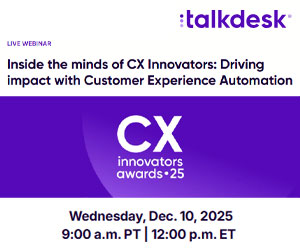Our panel of experts share some great advice for improving call monitoring and taking contact centre quality assurance (QA) to the next level.
1. Establish What You Are Monitoring and Why
Most contact centres analyse the customer’s and the business’s most important contact outcomes and create a scorecard.
In doing so, they ask themselves:

- If customer experience is my top priority, am I using call monitoring to train and supervise contact centre staff to achieve service targets?
- Do I need an audit trail to resolve potential disputes with customers and other parties?
- Am I in an industry like financial services or utilities that are under the watchful eye of regulators?
Monitoring and recording calls has multiple uses. Take a closer look at your own scorecard criteria and ask yourself: “Where do we fit in?” And: “What should we be monitoring?”
Contributed by: Charlie Sneddon, Senior Sales Engineer at Calabrio
2. Calibrate Your Call Scoring
Proper calibration ensures that all coaches are providing uniform measures for call scoring, so you can be sure that you are setting clear expectations to advisors about what “good” looks like.
In these sessions, listen to calls together and compare scores from different analysts, looking out for variations and removing subjectivity.
If you do this, advisors receive the fairest and most understandable scores, enabling them to improve their call handling technique and know that quality scores are fair. This maximizes transparency and trust in the process.
In fact, it can be good to invite advisors to calibration sessions, so they can see the effort that’s being made to create a fair culture and gain a better understanding of how they can bolster their quality scores.
3. Bring in Self-Scoring

A big problem for many contact centres is that advisors do not buy in to their quality programme, so the insights taken from call monitoring go to waste.
By flagging interactions to be recorded and reviewed by their supervisor, advisors can be given the opportunity for self-evaluation by initiating coaching sessions where both the agent and supervisor can evaluate the same interaction and compare their scores.
Allowing your advisors to participate in the quality process is an easy way to facilitate buy-in and identify what advisors think of themselves and their work.
Contributed by: Ryan Walsh, Technical Product Marketing Specialist at Aspect Software
4. Follow-Up on Feedback From Previous Sessions
With call monitoring, it’s important to follow up on previous feedback given to a member of staff to ensure they are sticking to the advice given.
It’s best to monitor this over a longer period of time to make sure the person isn’t falling back into bad habits.
To do this, space your call listening out over a number of days and revisit feedback a week later to check the coaching has made an impact.
Just make sure that you always give clear and concise feedback and check the advisor’s understanding of the key coaching outcomes.
Contributed by: Michele Anwar, Head Of Sales at QContact
5. Use Different Quality Forms for Each Call Type
Agents within a contact centre may handle different types of calls, such as inbound, sales or outbound customer service. Each call type should be assigned a different quality form.
The difference in the nature of the conversation should be reflected in the questions that are included in the quality form that you fill in while call listening.
If you do stick to the same form, what you will likely find is that quality scores vary greatly from one channel to another, meaning that they no longer truly reflect customer satisfaction. This devalues the entire exercise.
6. Save Best-Practice Calls

There is much insight that can be gained from the thousands of interactions taking place in a contact centre every day.
Quality analysts should be utilizing this and identifying examples of “best-practice” calls so these can be used for training. This helps to continually improve the overall call-handling process within the contact centre.
By doing this, quality and contact centre managers can isolate the successful techniques that call centre agents are using.
By drilling down into this insight, you can also uncover the words, language and signals received which indicate a positive response from the customer.
Contributed by: Brent Bischoff, Cloud and Data Services Consultant at Business Systems
7. Analyse Your Outliers
Stretched for time, quality analysts sometimes only analyse calls with low handling times, as these are quicker to listen to and process.
However, you can likely learn more from calls with long handle times, as this may highlight that something has gone wrong within the call-handling process.
Other examples of key outliers to target include:
- Calls with call escalations
- Exceptionally short calls
- Calls with long or multiple holds
- Calls with transfers across the business
AI and speech analytics will enable you to spot these key outliers. These technologies are increasingly capable of delivering key insights and we can rely on the results a lot more.
Why? Because we can now get much more accurate transcriptions of call recordings than was previously possible.
8. Analyse Call Recordings and Screen Recordings in Unison

Many organizations use a combination of call and screen recording to identify where a service or a process has broken down.
For example, if you listen back to a recording of an agent giving the wrong advice – the natural conclusion is the agent got it wrong.
However, when you play back call and screen recording together you can see the issue was that the support documentation the agent referenced was wrong. This means that any future agent who handles the same enquiry will make the same mistake.
By looking at both call and screen recordings, you extend QA beyond what happens on the call. This is a simple, effective way to identify gaps in the underlying knowledge management system that underpins your customer service.
Contributed by: Trevor Davis, Product Director at Enghouse Interactive
9. Use Call Monitoring to Develop New Best Practices

Call monitoring allows you to obtain valuable insights into why customers contact you and the problems they face.
By identifying the source of a quality problem, you can remedy the issue by developing new best practices to share with the team.
You can create these by using the employee’s actual conversations/interactions and pointing out what was done well, what went wrong, and how to prevent missteps from occurring in the future.
Managers and supervisors can then generate positive performance results far more quickly than by using hypothetical scenarios or role-playing.
This is where continuous training comes in. Extensive and recurring training is one of the most important elements for developing highly competent and satisfied staff.
Contributed by: James Mackie, Manager, UKI Sales Engineering at Mitel
10. Listen Out for What Drives Customer Satisfaction

Here are five best practices that you can leverage to improve your call monitoring.
- Form a dedicated scorecard for each channel
- Weight the scorecard through customer research
- Remove subjectivity through calibration
- Set up agent self-assessments
- Select the most appropriate software
The second tip here is too often overlooked. This is a mistake, as customer research into what drives customer satisfaction should dictate what is included in your quality scorecard.
Neglecting this will leave you with little correlation between quality and customer satisfaction scores, leaving you scratching your head as to how you can improve satisfaction rates.
With a properly weighted scorecard, you can properly find the balance of advisor efficiency without sacrificing service quality.
Contributed by: Anne Thebaut, Marketing Communication Manager at Wisper
11. Nominate Advisors for Call Scoring

Advisors should understand the value of call monitoring. It should not be viewed as a tool to “catch them out”.
One way to get agent buy-in is to have the team nominate an advisor once a month to analyse some calls for themselves. This increases their investment in and understanding of the process.
Another way to do this is to include advisors in your call calibration sessions.
These are important, as you must calibrate the way that you monitor call quality, in order to remove human bias.
To improve your calibration sessions, try:
- Assigning a leader to make decisions when scorecard criteria are subjective
- Developing a document to make a note of decisions, which analysts can reflect on when monitoring calls
- Focusing on a different call type each session to keep things unpredictable and calibrate across each key contact reason
Contributed by: Andrew Tucker, Success Manager at Cirrus
12. Communicate the Key Objectives

Ensure advisors buy in to the process. Communicating the objectives is key here, so employees regard monitoring activity as a means to improve, rather than a punishment.
You can secure this buy-in through automating large amounts of the quality management process.
From scoring evaluations to assigning effective coaching, automation can remove the burden of menial tasks so call monitoring analysts have more time with their teams, better supporting them.
Finally, keep monitoring activities simple and as standardized as possible and take the time to introduce and implement. Don’t try to achieve too much too quickly.
Contributed by: Richard Gregory, Senior Sales Executive at Odigo
13. Take Call Monitoring Beyond Ticking Boxes

Don’t just create quality scorecards that determine whether an advisor has ticked boxes A and B within the contact handling process, also focus on customer outcomes.
Instead, call monitoring should be about meeting standards and if not, identifying opportunities for improvement – not just about passing or failing.
Then focus on balancing scores with other priorities such as compliance obligations.
Too much focus on process and compliance and you run the risk of providing a soulless customer experience. Too much focus on customer experience and you risk not resolving the customer issue efficiently.
Also, involve all your stakeholders in this process. Everyone (manager, quality analysts, team leaders, advisors) will have a unique and informed perspective and taking all these into account will maximize your chances of success.
Contributed by: Michael Gray, Head Of Marketing at Sensée
14. Evaluate Quality Across ALL Channels
If you want your advisors to provide exceptional service across all your channels – including digital – you need to be evaluating them on those channels so you can give them effective and tangible coaching and feedback to improve.
We often assume that a strong advisor will be strong across all channels. However, just because an agent is scoring well in voice evaluations doesn’t mean they articulate themselves well on written channels.
On non-voice channels, advisors not only have to think about things like tone, as they do with voice, but also spelling and grammar, both of which can give people a very poor perception of the professionalism of your organization when poorly executed.
For these reasons, it’s critical you evaluate quality across ALL channels your contact centre supports.
15. Use Analytics for a More Representative Sample

Adding speech analytics into your quality management programme will ensure that you are evaluating a fair sample across the different types of calls advisors manage with the ability to target the great, the good, and the ugly interactions.
It’s important to evaluate subpar interactions that are a detriment to your metrics so that you can coach accordingly.
Also, you need to evaluate the average interactions – which most contact centres are doing today, as well as target and evaluate outstanding interactions so that you can praise and recognize where appropriate.
Ensuring a fair sample helps combat the advisor perception that “You only evaluate my bad interactions.”
Contributed by: Lauren Comer, Principal Product Marketing Manager at NiCE
16. Incentivize the Right Behaviours

It is important to remember why you do call monitoring – to incentivize employees to demonstrate the right actions and behaviours that will deliver the outcomes you want for your customers and the business.
To do this well, you need employees’ buy-in. They must believe in the metrics and that they are being evaluated in a fair and consistent way compared to other employees (and to other evaluations performed on themselves).
To do this, provide transparent feedback and give employees access to additional coaching to help them perform better in the future.
Contributed by: Craig Farley, Head of Solution Consulting at IP Integration
17. Take Monitoring Beyond Individual Performance

It’s important to assess how the processes and technologies support advisors on a call, not just their individual performance.
Analysing the call without the whole context may lead to wrong conclusions and an ineffective course of action.
To define the right course of action, which can include adjustments to the technology or changes in the approach to customers, customer and agent performance data needs to be connected with the call and analysed as a whole.
All the tools and functionalities (call monitoring, screen capture, speech analytics, knowledge base updates, customer feedback,…) need to work together.
But the starting point is having a quality scorecard that enables you to focus on measuring what you value the most.
Contributed by: Noel Lavery, UK Sales Director at Infobip
18. Automate Where Possible

Traditional contact centre quality programmes have typically been based on reviewing a random selection of conversations.
With this being the case, it is difficult to get a true sense of why customers are calling, what they’re saying during their interactions, and how effectively their needs are being met by agents.
By automating call monitoring, organizations can go beyond random sampling.
Contact centres can then more accurately understand call drivers and agent performance to inform training for individuals and across the entire advisor base.
Contributed by: Frank Sherlock, VP of CallMiner
19. Use Tools to Gather Even More Insights

By monitoring all conversations across digital and voice channels, organizations can use QA tools to predict churn, identify fraud, remind agents of mandatory regulatory disclosures and more in real time.
These tools can even aid agents with objective monitoring of soft skills, such as active listening, building rapport and demonstrating ownership.
The analysis that such intelligent solutions provide accurately pinpoints risks and behaviours that affect customer satisfaction metrics and automatically queues them with a supervisor for additional evaluation and coaching.
Contributed by: Aviad Abiri, VP, Portfolio Sales Enablement at NiCE
For more from our panel of experts on how you can improve your QA programme, check out our articles:
- 30 Tips to Improve Your Call Quality Monitoring
- 11 Tips and Tools to Improve Call Centre Quality Assurance (QA)
- How Can I Monitor Quality Across All Contact Centre Channels?
Author: Robyn Coppell
Reviewed by: Hannah Swankie
Published On: 12th Apr 2021 - Last modified: 30th Sep 2025
Read more about - Customer Service Strategy, Alvaria, Aviad Abiri, Brent Bischoff, Business Systems, Calabrio, CallMiner, Cirrus, Craig Farley, Enghouse Interactive, Infobip, IP Integration, Lauren Comer, Mitel, Monitoring, NiCE, NiCE CXone, Odigo, Performance Management, QContact, Quality, Richard Gregory, Sensee, Service Strategy, Wisper








































